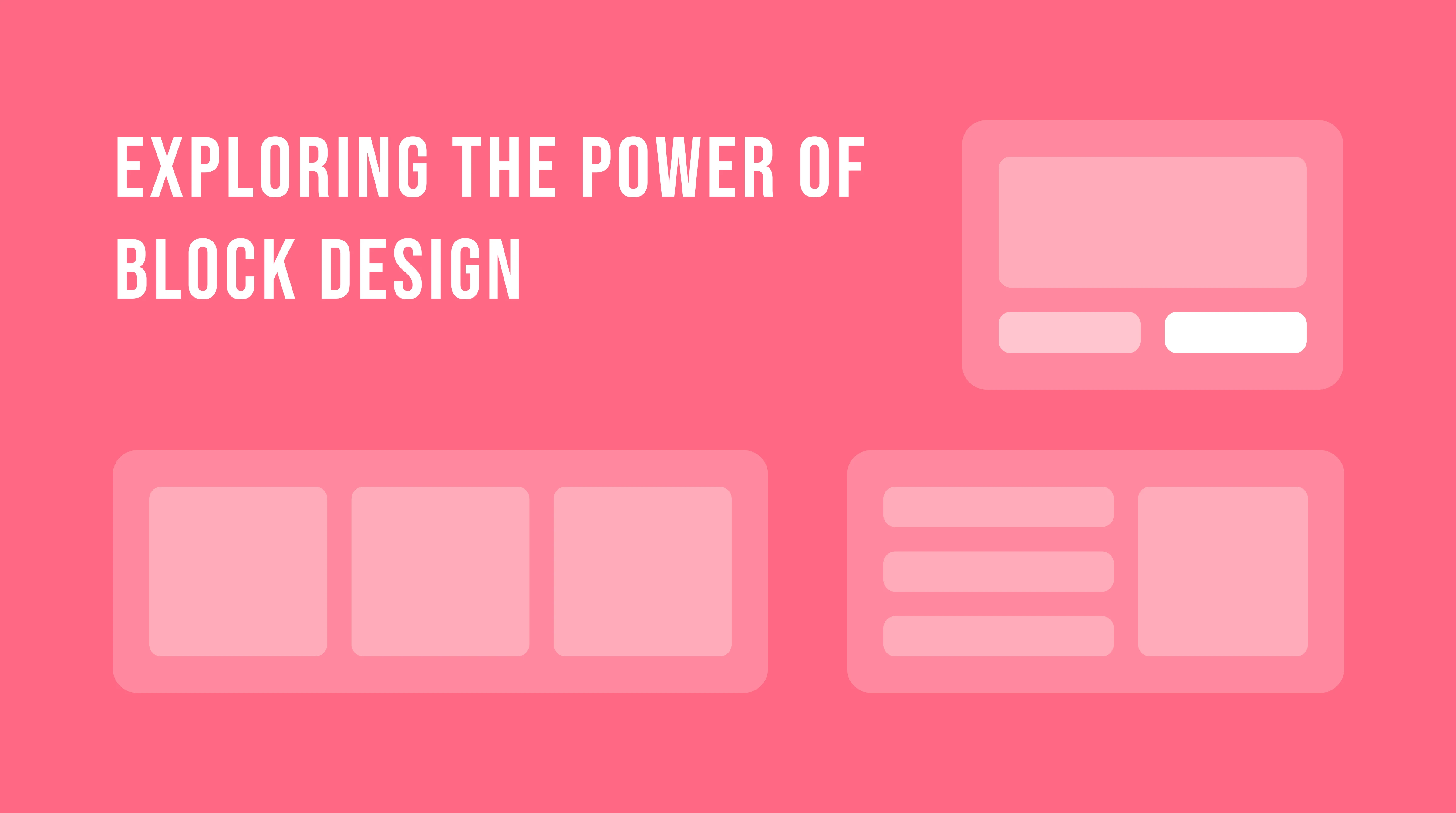Summary by AI ✦
The block design method, often known as block patterns, has gained significant popularity in the quickly developing field of web design and development. This process is based on creating reusable and modular elements called blocks that are easily assembled and rearranged to create complex web designs more quickly. Designers may increase consistency across designs, accelerate maintenance and upgrades, and optimize workflow by utilizing block patterns.
When designing responsive designs, which easily adjust to different screen sizes and devices, this method is quite helpful. It also promotes a better organized and structured design process, which helps development teams collaborate and work more productively.
Modular content blocks for showcasing products or services, interactive card layouts, and scalable grid systems are a few popular examples of block design execution. These examples highlight the adaptability and creativity that the block design methodology provides, enabling designers to produce engaging and simple web experiences.
Block Design Approach Benefits
The Block Design Approach is a strategic web design technique that divides the design of a website into more manageable, smaller blocks or modules. These blocks are very adaptable and reusable across multiple pages or projects since they contain particular functionality, content categories, or design aspects. Here are some greater clarity of the benefits of this strategy:
Modularity and Flexibility
The breaking down of the design into blocks offers easy organizing, improvements, and removing of individual blocks without significantly affecting the structure as a whole. Because of its modularity, layout alterations are made to be very flexible, allowing designers to easily experiment with new layouts and arrangements.
Consistency and Brand Identity
The Block Design Approach promotes consistency in design language and user experience throughout the website. Since the same set of blocks is used across various pages, users encounter familiar elements and interactions, reinforcing brand identity and establishing a cohesive visual experience.
Efficiency in Design and Development
Utilizing pre-built blocks speeds up the development and design practice. Instead of starting from scratch with every page layout, designers may concentrate on modifying particular blocks, which will result in fewer iterations and a shorter time-to-market. Reusable code components help developers by optimizing project productivity and easing the development process.
Scalability and Future-Proofing
The Block Design Approach facilitates scalability by allowing new features or sections to be seamlessly integrated using existing blocks. As the website evolves and grows, designers and developers can easily extend functionality by adding new blocks or modifying existing ones, ensuring that the design remains adaptable to changing requirements and trends.
Responsive Design and Adaptability
Designs based on blocks are naturally responsive and adjustable to different screen sizes and devices. The website provides a similar user experience across desktops, laptops, tablets, and smartphones since blocks may be scaled or rearranged dependent on the viewport, making it more accessible and user-friendly for all users.
Examples of Blocks Design in Action
Material Design's Component Library
Google's Material Design offers a vast collection of user interface (UI) components or blocks that designers can use to build aesthetically pleasing and consistent user interfaces. A variety of blocks, including buttons, cards, and navigation elements, are available from Material Design Components.
Bootstrap Framework
The Bootstrap Framework is a well-known front-end framework that uses a block-based design methodology. Designers may create responsive and modular layouts by utilizing Bootstrap's grid framework and components. Blocks like modals, alarms, and forms are examples of bootstrap components.
Atomic Design Methodology
Atomic Design, proposed by Brad Frost, emphasizes the creation of design systems with atomic blocks such as atoms (basic elements like buttons), molecules (combinations of atoms like forms), and organisms (complex components like navigation bars). This approach fosters reusability and scalability in design projects.
Future Scope:
The future scope for the block design method in web design and development looks promising as technology continues to advance. With the growing demand for responsive and adaptable websites across various devices, the block design approach will play a crucial role in creating efficient and user-friendly experiences.
As artificial intelligence and machine learning technologies evolve, we can expect to see further automation and optimization of block patterns, making it even easier for designers and developers to create complex layouts with minimal effort.
Overall, the block design method is poised to remain a foundational strategy in web design, continually evolving to meet the ever-changing demands of the digital landscape.
How to get started
At Sketchish, we specialize in assisting companies and brands in crafting exceptional websites and applications. Our dedicated team is committed to delivering top-notch services tailored to your specific needs. Whether you prefer the block design method or any other innovative approach, we are here to guide you every step of the way.
Our professional expertise ensures a seamless design process, resulting in visually stunning and highly functional digital solutions. Let us collaborate to bring your vision to life and enhance your online presence. Trust Sketchish for unparalleled design excellence and customer satisfaction. Get in touch with us today to embark on your design journey!
Share on:



